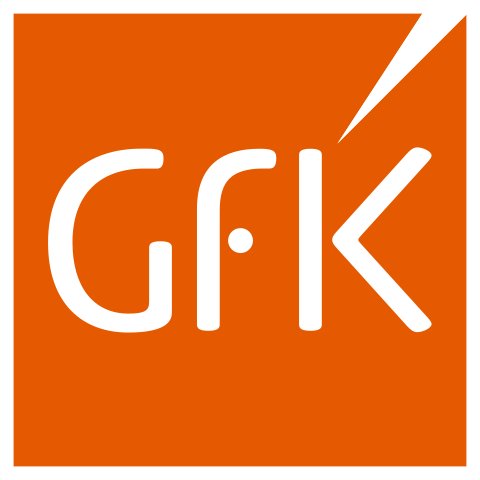Published on: May 12, 2023 | Last updated on: July 22, 2024 |
Are you looking to launch a product that faces little – or even no – competition?
In that case, skim pricing could be the answer.
Skim pricing usually works best when applied to products bought by “early adopters”, who are ready to pay more for these must-have items.
But how do you know if skim pricing is right for your business?
In this article, we look at skim pricing as a pricing strategy and explain what you should consider before adopting this price model within your company.

Also known as price skimming, skim pricing is the process by which companies set new product prices at a high number before lowering them again as more players enter the market.
Unlike penetration pricing, where new products are priced low in a bid to win over customers from the off, skim pricing relies on the unique appeal of recently launched products to satisfy shoppers.
Imagine, for instance, that you own a mobile phone company, and that you’ve just developed a brand new state-of-the-art handset. By following a price skimming strategy, you could set a skim price that recoups your research and development costs quite quickly.
Of course, once customer demand has peaked at the original price, it will then be up to you to revise that number to a more affordable rate – preferably one that appeals to more cost-conscious consumers.
The whole skim pricing model helps put price pressure on other players entering the market, establishing your position from the get-go.
Many companies use skim pricing for a variety of reasons, including:
Skim pricing can also help companies prove or disprove certain retail hypotheses, such as:
Skim pricing is most prevalent in the technology and fashion industries, and for good reason.
Because they continuously upgrade products, attracting early adopters to “the latest thing”, companies in these sectors are best positioned to benefit from skim pricing, which in turn helps their brands stay relevant within increasingly competitive markets.
After the initial furore of a product launch has died down, these companies also know how to lower prices in ways that attract more cost-conscious shoppers – although this process can take some time.
Original pricing usually lasts several months before businesses introduce cheaper price points, and even then it’s often only when a new product is ready to be released.
And so the skim pricing cycle repeats!
Skim pricing can have numerous advantages for businesses, including:
When it comes to building a premium image and generating widespread appeal for specific products, on the digital shelf or within physical retail spaces, skim pricing is almost always successful.
If enough interest is generated around a specific product, and this translates into sales come launch time, then skim pricing can help make back initial research and development costs for a business.
Higher price tags typically mean higher profit margins, providing that the skim pricing strategy is well thought-out and has been marketed effectively.
Which do you think your resellers will be more impressed by – a 5% margin, or a 500% one?
When working with distributors, it’s likely that skim pricing will see them earn a higher percentage commission alongside your own sales boost.
As with all pricing strategies, skim pricing is not foolproof and can have drawbacks, including:
Some shoppers will simply refuse to pay the higher price if they cannot see a tangible reason why they should.
If your skim pricing strategy generates too few sales, this could seriously impact both your business’s scalability and profitability.
Eventually, your competitors will come along and put pressure on your price points, with techniques like dynamic pricing levelling the playing field. Unless you keep innovating, skim pricing won’t work for your company in the long run.
If you set an initial price of £1,000 for a product and then drop that to £300 after several months, some early adopters will feel ripped off and simply wait until your product is cheaper before they buy.
Others may even switch to one of your competitors if you frustrate them too much with your skim pricing.
Deciding if skim pricing is right for your business means first examining the marketplace and how skim pricing could work for you within it.
Start by asking yourself the following questions:
Avoid price skimming if your target market is already filled with competitors. Customers have their pick of comparable products as is; why would they buy yours if the prices are too high?!
Instead, monitor your competitors and explore new avenues down which to launch exciting new products at initially high prices. Just make sure you don’t risk putting potential customers off with your strategy, otherwise they will shop elsewhere.
Skim pricing only works for products if customers perceive them as both innovative and invaluable. That means tapping into the uniqueness of your product to help it shine brighter than all others.
Showcase the most one-of-a-kind features of your product, as well as explaining how it could make a difference to your customers’ lives. More shoppers are likely to engage with your product this way, helping it win at the digital shelf and beyond.
You can learn more about your target audience by conducting plenty of market research before any product launch.
Try pulling together consumer panels that gauge feedback on specific aspects of your product, namely ones you can use to help support your skim pricing.
Inelastic products are ideally suited to skim pricing because price changes do not tend to affect demand for them.
Goods such as fuel and toilet paper are perfectly inelastic; no matter what they’re priced at, we see them as essential in our everyday lives. Ensure your products have similar inelastic appeal and you’ll be more likely to succeed with price skimming.
Check out our guide for advice on how to measure price elasticity and maximise profits.
Don’t be tempted to overdo it; skim pricing works best in short bursts.
Let the early adopter market become saturated, but take care not to alienate cost-conscious consumers over time. You’ll need their business later!
Still not sure if skim pricing is right for your business? Magpie DBX can help you decide.
Our Price Tracker is specially designed to collect and aggregate around 45 fields of data per digital product listing, showing you how you’re performing online and where (if any) improvements need to be made.
Could your brand benefit from skim pricing? Get in touch with us to request a free demo and you’ll see for yourself!
Don’t forget to follow us on social media for more helpful tips to supercharge your day-to-day business operations.
Want to learn more about how Magpie DBX can help your business? Get in touch with us and let us show you!



